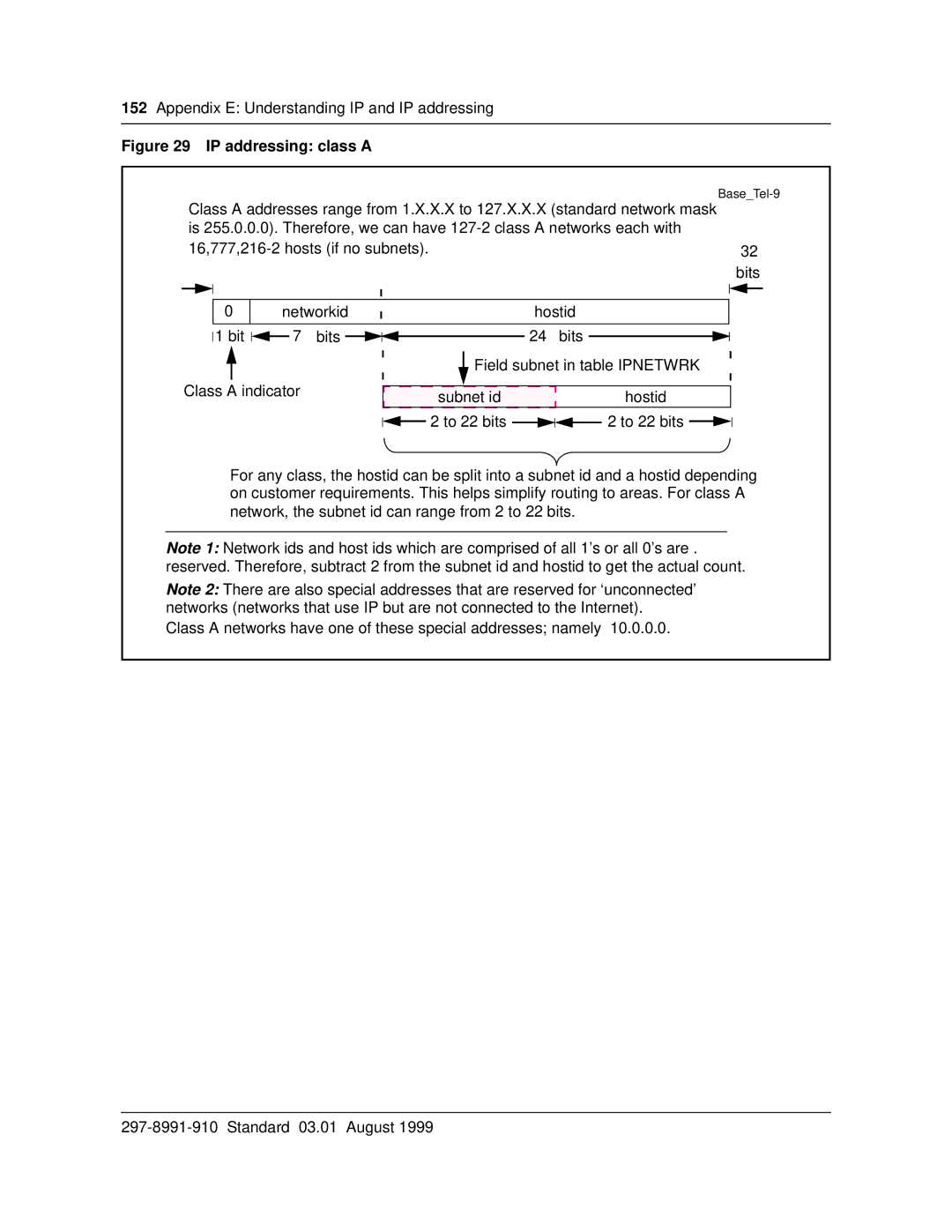
152Appendix E: Understanding IP and IP addressing
Figure 29 IP addressing: class A
Class A addresses range from 1.X.X.X to 127.X.X.X (standard network mask is 255.0.0.0). Therefore, we can have
| 0 |
| networkid |
|
|
|
|
|
|
|
|
| hostid | |||||||||||
|
|
|
|
|
|
|
|
|
| |||||||||||||||
|
|
|
|
|
|
|
|
|
|
|
|
|
|
|
|
|
|
|
|
|
|
|
|
|
1 bit |
|
| 7 bits |
|
|
|
|
|
|
|
|
|
|
| 24 bits |
|
|
| ||||||
|
|
|
|
|
|
|
|
|
|
|
| |||||||||||||
|
|
|
|
|
|
|
|
|
|
|
|
|
|
| Field subnet in table IPNETWRK | |||||||||
|
|
|
|
|
|
|
|
|
|
|
|
|
|
| ||||||||||
|
|
|
|
|
|
|
|
|
|
|
| |||||||||||||
|
|
|
|
|
|
|
|
|
|
|
|
|
|
| ||||||||||
|
|
|
|
|
|
|
|
|
|
|
|
|
|
|
|
|
|
| ||||||
Class A indicator |
|
|
|
|
|
|
|
|
|
|
|
|
|
|
| |||||||||
|
|
|
| subnet id |
|
|
|
|
|
| hostid | |||||||||||||
|
|
|
|
|
|
|
|
|
| |||||||||||||||
|
|
|
|
|
|
|
|
|
|
|
|
|
|
|
|
|
|
|
| |||||
|
|
|
|
|
|
| 2 to 22 bits |
|
|
|
|
|
|
| 2 to 22 bits |
| ||||||||
|
|
|
|
|
|
|
|
|
|
|
|
|
| |||||||||||
32 bits
For any class, the hostid can be split into a subnet id and a hostid depending on customer requirements. This helps simplify routing to areas. For class A network, the subnet id can range from 2 to 22 bits.
Note 1: Network ids and host ids which are comprised of all 1’s or all 0’s are . reserved. Therefore, subtract 2 from the subnet id and hostid to get the actual count.
Note 2: There are also special addresses that are reserved for ‘unconnected’ networks (networks that use IP but are not connected to the Internet).
Class A networks have one of these special addresses; namely 10.0.0.0.
